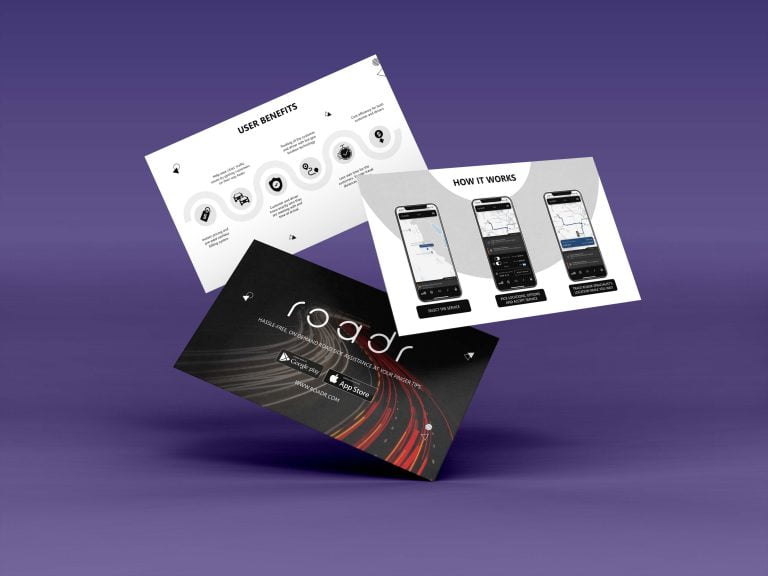Have you ever dreamt of bringing a brilliant business idea to life? Maybe you’ve got a game-changing product or a service that will revolutionize an industry. That’s fantastic! But turning that dream into a reality often requires one crucial ingredient: funding. And to get that funding, you need to impress investors and partners. How do you do that? With a winning pitch deck.
A pitch deck isn’t just a collection of slides; it’s your business story, condensed and polished, designed to grab attention and spark excitement. It’s your chance to show potential investors why your startup idea is worth their money and their time. Think of it as a powerful visual presentation that tells your company’s journey, highlights its potential, and clearly explains what you need to make it happen. To create a good pitch deck, you should include in your pitch deck compelling pitch examples that demonstrate the problem you are solving and the value proposition for early adopters.
I’ve seen countless pitch decks, and I can tell you, the difference between one that gets funded and one that gets filed away often comes down to how well you structure your pitch deck. In this comprehensive guide, I’ll walk you through everything you need to know to build a pitch deck that doesn’t just inform but truly impresses, helping you create an effective capital pitch deck for seeking funding.
Key Takeaways
- Storytelling is King: Your pitch deck isn’t just data; it’s a compelling narrative about your problem, solution, and future.
- Keep it Concise and Visual: Investors are busy; use clear, simple language, strong visuals, and limit text to convey your message quickly.
- Highlight Your Team and Traction: Investors invest in people and progress. Show them who you are and what you’ve already achieved.
- Clearly Define Your Ask: Be specific about how much money you need and exactly how you plan to use it to grow.
- Practice, Practice, Practice: A great deck needs a great delivery. Know your material inside and out, and be ready for any question.
What is a Pitch Deck, Anyway?
Before we dive into the “how,” let’s make sure we’re on the same page about the “what.” A pitch deck is a brief presentation, usually created with tools like PowerPoint, Keynote, or Google Slides, that provides a quick overview of your business plan. Its main goal is to introduce your company to potential investors, partners, or even customers. It’s not a full business plan (which can be dozens of pages long), but rather a summary designed to get a second meeting or generate interest.
Think of it like a movie trailer for your business. It needs to be exciting, show the best parts, and leave the audience wanting to see the full feature film. It’s your first impression, and as we all know, first impressions matter a lot! If you want to dive deeper into the art of investor presentations, I highly recommend checking out resources on mastering the art of the investor pitch deck.
Why Your Pitch Deck Matters More Than You Think
You might be thinking, “Can’t I just tell them my idea?” While enthusiasm is great, a well-structured pitch deck does several crucial things:
- It Organizes Your Thoughts: The process of creating a deck forces you to think clearly about every aspect of your business. What’s the problem? What’s your solution? Who’s your customer? How will you make money? This clarity is invaluable.
- It Shows Professionalism: A well-designed, thoughtful deck tells investors you’re serious, organized, and capable. A sloppy one, unfortunately, sends the opposite message.
- It Saves Time: Both yours and the investor’s. Instead of rambling, you present key information concisely, allowing investors to quickly grasp your vision and decide if it aligns with their interests.
- It’s a Leave-Behind: After your meeting, the deck serves as a reminder of your presentation, something investors can review and share with their partners. This is why it needs to be clear enough to stand on its own.
- It Builds Confidence: Knowing you have a strong, clear story to tell will make you feel more confident when you stand up to present.
Remember, investors hear many pitches. Your goal is to make yours stand out from the crowd. For more tips on making your presentation truly shine, explore ideas on how to make your pitch deck stand out.
The Core Slides of a Winning Pitch Deck
While there’s no single “perfect” number of slides (most suggest 10-15), the content on each slide is what truly counts. Here, I’ll walk you through the essential slides I believe every winning pitch deck should include.
1. The Cover Slide
This is your first impression. It needs to be clean, professional, and intriguing.
What to include:
- Your Company Logo and Name
- A Catchy Tagline or Value Proposition (what you do in one sentence)
- Your Name and Contact Information
- Date of Presentation
Tips: Keep it simple. Don’t clutter it with too much text. A great visual can set the tone.
2. Problem: Identify the Pain
Every successful business solves a problem. This slide is where you clearly define the pain point your target customers are experiencing. Make it relatable and impactful.
What to include:
- A clear, concise statement of the problem.
- Evidence that this problem exists (data, anecdotes, market research).
- Who experiences this problem (your target audience).
- Why current solutions aren’t good enough.
Tips: Use relatable examples. The more an investor feels the pain of the problem, the more they will value your solution.
“Investors don’t invest in ideas; they invest in solutions to problems they understand.”
3. Solution: Your Brilliant Answer
Now that you’ve highlighted the problem, it’s time to introduce your hero: your solution! This is where you explain how your product or service uniquely addresses the identified pain.
What to include:
- A clear, concise description of your solution.
- How it works (briefly, don’t get too technical here).
- The key benefits to the customer.
- A visual representation, if possible (mockup, screenshot, diagram).
Tips: Focus on the “what” and “why” it’s better, not just the “how.” Show, don’t just tell.
4. Market Opportunity
Investors want to know if your idea can become a big business. This slide demonstrates the size and growth potential of the market you’re targeting.
What to include:
- Total Addressable Market (TAM): The total revenue opportunity if everyone who could buy your product bought it.
- Serviceable Available Market (SAM): The portion of the TAM you can realistically reach with your current business model.
- Serviceable Obtainable Market (SOM): The portion of the SAM you expect to capture in the near term.
- Market trends and growth projections.
Tips: Use credible sources for your data. Don’t exaggerate, but show ambition. Visuals like pie charts or bar graphs work well here.
5. Product/Service: How It Works
This slide expands on your solution, giving a slightly deeper dive into your product or service’s features and functionality.
What to include:
- Key features and their benefits.
- User experience (how a customer would interact with it).
- Screenshots, diagrams, or a brief demo video (if presenting live).
- Your unique selling proposition (USP) – what makes it special.
Tips: Keep it high-level. Avoid jargon. Show how your product solves the problem identified earlier. If you’re looking for ways to make your presentation more engaging, consider incorporating interactive elements, as discussed in 10 ways to make your presentation more interactive.
6. Business Model: How You’ll Make Money
This is critical. Investors need to understand how your business will generate revenue and become profitable.
What to include:
- Your pricing strategy.
- Revenue streams (e.g., subscription, sales, advertising, transaction fees).
- Customer acquisition strategy (how you’ll get customers).
- Your unit economics (cost to acquire a customer vs. their lifetime value).
Tips: Be clear and concise. Use a simple diagram or table if it helps illustrate your model.
7. Traction/Milestones: Proof You’re Moving Forward
This is arguably one of the most important slides, especially for early-stage companies. It shows investors that you’re not just talking about your idea – you’re executing it and making progress.
What to include:
- Key achievements to date (e.g., users, revenue, partnerships, product launches, pilot programs).
- Growth metrics (month-over-month growth, user engagement).
- Any notable press or accolades?
- Future milestones you plan to achieve.
Tips: Use charts and graphs to visualize growth. Focus on metrics that matter and show momentum. Even small wins count!
8. Team: The Dream Team Behind It All
Investors don’t just invest in ideas; they invest in people. This slide introduces your core team and highlights why you are the right people to make this vision a reality.
What to include:
- Photos of key team members.
- Their names, roles, and relevant experience/expertise.
- Why are their skills crucial for the success of the business?
- Any notable advisors or board members?
Tips: Emphasize relevant experience, past successes, and how your team complements each other. Show passion and commitment.
9. Financials: The Numbers Game
This slide provides a snapshot of your current financial situation and future projections. Don’t worry if you’re pre-revenue; focus on projections and assumptions.
What to include:
- Historical financials (if applicable).
- Projected revenue and profit for the next 3-5 years.
- Key assumptions behind your projections (e.g., customer acquisition cost, conversion rates).
- Break-even analysis.
- Use of funds (how you’ll spend the investment).
Tips: Be realistic but ambitious. Don’t use tiny font sizes for a complex spreadsheet. Simplify. Focus on the key numbers and trends. For a deeper dive into creating persuasive presentations, consider exploring the best tips for creating a persuasive business pitch deck.
10. Competition: Who Else is Out There?
No business operates in a vacuum. This slide shows that you understand the competitive landscape and know how you fit in.
What to include:
- List of your main competitors.
- Their strengths and weaknesses.
- Your competitive advantages (why you’re better or different).
- A “competitor matrix” (a 2×2 graph plotting competitors based on two key differentiators, with your company positioned uniquely).
Tips: Don’t dismiss competitors. Show that you respect them, but have a clear strategy to win. This demonstrates strategic thinking.
11. Ask: What Do You Need?
This is where you clearly state how much money you are seeking and what you plan to do with it. Be specific!
What to include:
- The exact amount of funding you are raising.
- How you plan to use the funds (e.g., “50% product development, 30% marketing, 20% team expansion”).
- What milestones will this funding help you achieve?
- Your desired valuation (if you’re comfortable sharing).
Tips: Be transparent. Investors want to see that you have a clear plan for their money.
12. Vision/Future: Where Are You Going?
This slide is about painting a picture of the future. What’s the grand vision for your company?
What to include:
- Your long-term vision and mission.
- Potential for future products, markets, or growth areas.
- How your company could impact the world or industry.
- Exit strategy (e.g., acquisition, IPO) – this shows investors their potential return.
Tips: Inspire confidence and excitement. Show that you’re thinking big.
13. Call to Action/Contact: The Next Step
Don’t leave them hanging! Make it easy for interested investors to follow up.
What to include:
- Your name, email, and phone number.
- Your company website.
- A clear call to action (e.g., “Let’s discuss how we can build the future together!”).
- Thank you for their time.
Tips: Keep it professional and inviting.
Design and Delivery: Beyond the Content
Having great content is half the battle. How you present it, both visually and verbally, makes a huge difference.
Keep it Simple, Visual, and Clean
Less is More: Avoid text-heavy slides. Use bullet points, short sentences, and plenty of white space.
Visuals are Key: Use high-quality images, charts, and graphs. Visuals are processed faster and remembered longer than text.
Consistent Branding: Use your company’s colors, fonts, and logo consistently. This builds professionalism.
Readability: Ensure your font size is large enough to be easily read from a distance.
Animations and Transitions: Use them sparingly and purposefully. Too many fancy effects can be distracting. Learn about specific effects like Morph transition in PowerPoint or the power of using animations in presentations to enhance, not detract. Remember, a creative pitch deck vs. low-quality presentations often comes down to thoughtful design.
“A great pitch deck tells a story with visuals, not just words.”
Tell a Story
Humans are wired for stories. Structure your pitch like a narrative:
- Beginning: Introduce the problem and your vision.
- Middle: Explain your solution, market, business model, and progress.
- End: Show your team, financials, and what you need to achieve your grand vision.
Practice, Practice, Practice!
You know your business inside and out, but can you explain it clearly and concisely under pressure?
- Rehearse Aloud: Practice your pitch many times, ideally in front of a mirror or, even better, a critical friend.
- Time Yourself: Most pitches are short (5-10 minutes for the deck, plus Q&A). Make sure you can get through your key points within the time limit.
- Anticipate Questions: Think about what investors might ask and prepare your answers.
- Focus on Flow: Ensure a smooth transition between slides and topics. For general tips on improving your public speaking, consider these 10 tips to improve your presentation skills.
Know Your Audience
Tailor your pitch to the specific investors you’re meeting. Research their portfolio, their investment focus, and what types of companies they typically fund. This allows you to highlight aspects of your business that align with their interests.
Be Ready for Questions
The Q&A session is often more important than the pitch itself. This is where investors dig deeper and assess your understanding, confidence, and resilience.
- Listen Carefully: Make sure you understand the question before answering.
- Be Honest: If you don’t know the answer, say so, but offer to follow up.
- Stay Calm: Even if questions are tough, maintain your composure.
- Show Passion: Let your enthusiasm for your business shine through.
Common Pitch Deck Mistakes to Avoid
Even with the best intentions, it’s easy to fall into common traps. Here are a few to steer clear of:
- Too Much Text: Overloading slides with paragraphs makes them unreadable and boring.
- No Clear Problem/Solution: If investors can’t understand what problem you solve, they won’t understand your value.
- Exaggerated Claims: Be realistic with your market size and financial projections. Investors can spot hyperbole.
- Ignoring Competition: Pretending you have no competitors shows a lack of understanding of the market.
- Weak Team Slide: Not highlighting why your team is uniquely qualified.
- Unclear Ask: If investors don’t know how much you need and why, they can’t help you.
- Bad Design: Sloppy, inconsistent, or hard-to-read designs reflect poorly on your professionalism.
- Lack of Practice: Fumbling through slides or not knowing your numbers is a red flag.
- Generic Deck: Not tailoring the deck to the specific investor or audience.
- Forgetting a Call to Action: Not telling investors what the next step is.
For a broader perspective on creating effective presentations, you might find valuable insights in Mastering PowerPoint presentations: a comprehensive guide, or browse the PPTGuru blog for more tips and tricks.
Explore Pitch Deck Slides
Final Thoughts: Your Pitch, Your Future
Creating a winning pitch deck is an art and a science. It requires clarity of thought, strategic storytelling, and a keen eye for design. It’s not just about getting money; it’s about effectively communicating your vision and passion. Remember that your pitch deck is a living document – it will evolve as your business grows and as you gather feedback.
By focusing on a compelling narrative, clear visuals, and strong evidence of progress, you’ll be well on your way to crafting a pitch deck that not only impresses investors but also helps you secure the funding you need to turn your entrepreneurial dreams into a thriving reality. Good luck, and happy pitching!






